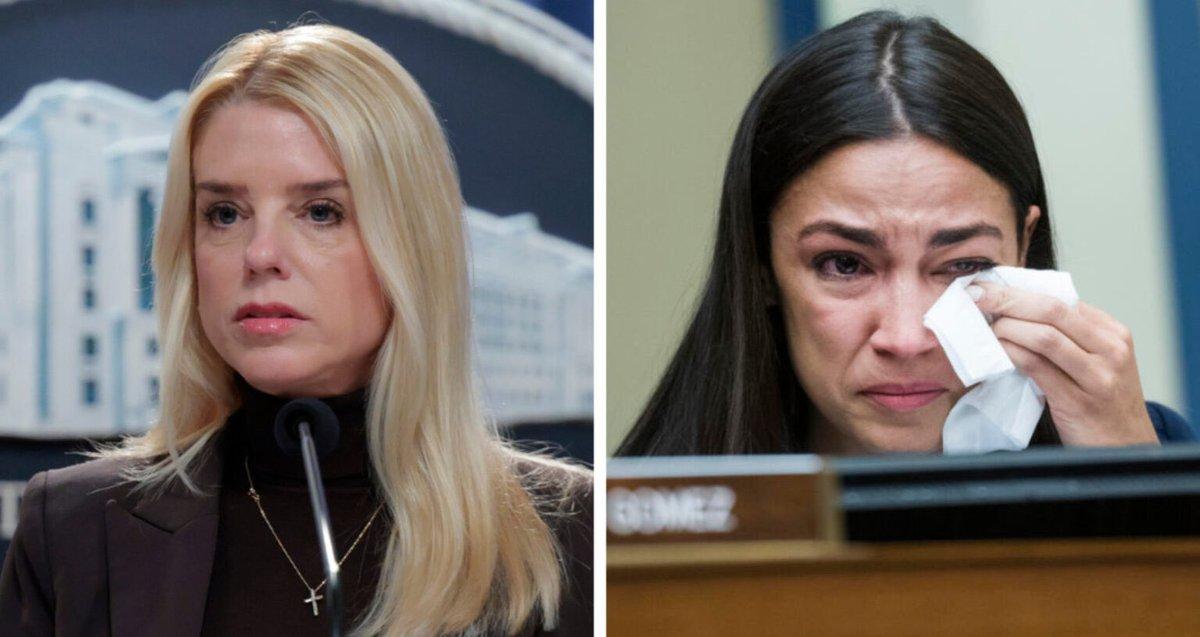In a heated political climate, Representative Alexandria Ocasio-Cortez (D-N.Y.), a prominent progressive voice in Congress, has found herself at the center of a contentious feud with Tom Homan, President Donald Trump’s border czar. The ongoing clash, rooted in their starkly opposing views on immigration policy, has escalated to the point where Ocasio-Cortez has publicly expressed concerns about a potential Department of Justice (DOJ) investigation targeting her. The tension stems from Homan’s ominous hints that AOC’s actions—specifically her efforts to educate immigrants about their legal rights—could cross legal boundaries, prompting a referral to the DOJ. This dramatic standoff has ignited debates about free speech, political intimidation, and the boundaries of immigr ation enforcement.

The conflict began earlier this year when Ocasio-Cortez hosted a “Know Your Rights with ICE” webinar, aimed at informing her constituents about their constitutional protections when interacting with Immigration and Customs Enforcement (ICE) agents. The initiative, co-organized with the Immigrant Defense Project, was intended to empower immigrants in her district, particularly in Queens and the Bronx, amid the Trump administration’s aggressive deportation agenda. AOC’s webinar advised individuals on how to respond to ICE encounters, emphasizing rights such as remaining silent and refusing entry without a warrant. While First Amendment advocacy groups have called these efforts “plainly lawful,” Homan, a staunch advocate for strict immigration enforcement, has accused AOC of “impeding” ICE operations and potentially endangering federal authorities.
Homan, a seasoned immigration official who served as acting ICE director during Trump’s first term, has not minced words. In a February Fox News appearance, he revealed he had sent a letter to the Deputy Attorney General to inquire whether AOC’s actions constituted “impediment” of law enforcement efforts. “I’m working with the Department of Justice to find out. Where is that line that they cross?” Homan stated, adding, “Maybe AOC is going to be in trouble now.” His remarks, echoed across multiple media platforms, have fueled speculation about whether the DOJ could launch a formal investigation into the congresswoman’s activities.

Ocasio-Cortez, undeterred, has fired back with characteristic defiance. At a town hall in Queens on May 2, 2025, she directly addressed Homan’s threats, declaring, “Come for me.” She accused him of attempting to intimidate elected officials and suppress free speech, asserting that her efforts to inform constituents of their rights are protected under the First Amendment. In a letter to Attorney General Pam Bondi, AOC demanded clarity on whether the DOJ had succumbed to political pressure to target her. “Mr. Homan’s repeated attempts to use your agency to politically intimidate duly elected officials are a textbook threat to the right to free speech in the United States,” she wrote. As of late February, she noted that the DOJ had not contacted her office, leaving the status of any investigation unclear.
This feud is not new. AOC and Homan have clashed since the early years of Trump’s first administration, when Ocasio-Cortez emerged as a vocal critic of ICE, even calling for its abolition. Homan, tasked with implementing Trump’s mass deportation plans, has accused her of encouraging immigrants to evade law enforcement, claiming her actions could shield “public safety threats.” In a particularly pointed exchange, Homan mocked AOC, saying he takes “pleasure” in living “rent-free” in her mind, while she called him a “coward” for targeting her advocacy.
The broader context of this dispute is the Trump administration’s hardline immigration policies, which have sparked widespread controversy. Homan has touted reduced border crossings and high-profile deportations, including the contentious case of Kilmar Abrego Garcia, an El Salvadoran deported due to an “administrative error” despite fears of gang retaliation. AOC has condemned such actions as “sanctioned kidnappings,” further intensifying her conflict with Homan.

Critics of Homan argue that his threats against AOC are part of a broader strategy to silence dissent, raising alarms about the politicization of the DOJ. Supporters, however, view AOC’s actions as obstructing lawful immigration enforcement. The debate has drawn attention to the fine line between educating communities and interfering with federal operations, with legal experts divided on whether AOC’s webinar crosses into illegal territory. First Amendment advocates maintain that her actions are protected speech, while Homan insists the DOJ must clarify the legal boundaries.
As this saga unfolds, the implications are profound. AOC’s defiance underscores her commitment to her constituents, particularly vulnerable immigrant communities, while Homan’s hardline stance reflects the Trump administration’s unwavering focus on border security. The lack of response from the DOJ keeps the question of an investigation open, fueling speculation and tension. For now, AOC remains steadfast, challenging Homan to “come for me” while continuing her advocacy. This clash not only highlights the deep divide over immigration policy but also raises critical questions about the limits of free speech and the role of federal agencies in political disputes.
The nation watches as this high-stakes confrontation plays out, with AOC and Homan embodying opposing visions for America’s future. Whether the DOJ will act on Homan’s referral remains uncertain, but one thing is clear: this battle is far from over.





